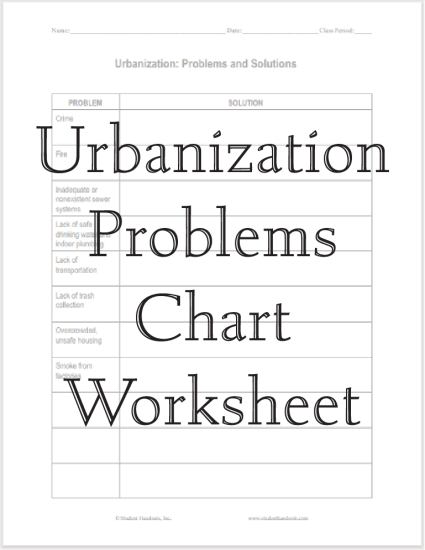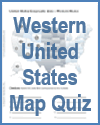Click here to print. Answers will vary.
Students are asked to devise solutions to problems stemming from urbanization, including crime, fire, inadequate sewer systems, and lack of trash collection.
Urbanization can indeed lead to various challenges, including those mentioned such as crime, fire, inadequate sewer systems, and lack of trash collection. Here are some solutions to address these problems that have been tried, to varying degrees of success.
Crime:
- Community Policing: Implement community policing strategies to build trust between law enforcement and the community. This can lead to more effective crime prevention and resolution.
- Investment in Education and Youth Programs: Create opportunities for youth through education and extracurricular programs to reduce the risk of engaging in criminal activities.
- Increased Lighting and Surveillance: Improve street lighting and install surveillance cameras in high-crime areas to deter criminal activity.
Fire Safety:
- Building Codes and Inspections: Enforce and regularly update building codes to ensure structures are built with fire-resistant materials and safety features. Conduct routine inspections of buildings to ensure compliance.
- Fire Departments: Invest in well-equipped fire departments with trained personnel. Ensure fire hydrants are strategically placed.
- Public Awareness and Education: Conduct fire safety awareness campaigns to educate residents about fire prevention and evacuation procedures.
Inadequate Sewer Systems:
- Infrastructure Investment: Invest in the expansion and maintenance of sewage and sanitation infrastructure to accommodate the growing urban population.
- Waste Treatment Plants: Build or upgrade wastewater treatment facilities to process sewage efficiently and safely.
- Stormwater Management: Implement sustainable stormwater management practices to reduce pollution and strain on sewer systems.
Lack of Trash Collection:
- Regular Collection Services: Ensure regular and reliable trash collection services for all urban areas.
- Recycling Programs: Promote recycling by implementing recycling programs to reduce the amount of waste sent to landfills.
- Public Awareness: Educate residents about the importance of proper waste disposal and recycling practices.
Affordable Housing:
- Affordable Housing Initiatives: Develop and support affordable housing programs to address homelessness and housing shortages.
- Rent Control: Implement rent control policies to prevent excessive rent increases.
- Mixed-Income communities: Promote the development of mixed-income neighborhoods to ensure a diverse range of housing options.
Transportation Issues:
- Public Transportation: Invest in and expand public transportation systems to reduce traffic congestion and provide affordable commuting options.
- Pedestrian and Bicycle Infrastructure: Create safe walkways and bike lanes to encourage non-motorized transportation and reduce reliance on cars.
- Urban Planning: Promote smart urban planning to reduce the need for long commutes and enhance transportation efficiency.
- Free Public Transit: Join major cities in making public transportation free, thereby easing congestion, infrastructure wear-and-tear, and pollution, while meeting climate change initiative targets.
Environmental Sustainability:
- Green Spaces: Develop and maintain parks and green spaces to improve air quality and provide recreational areas.
- Renewable Energy: Invest in renewable energy sources to reduce pollution and combat climate change.
- Waste Reduction: Promote waste reduction and encourage the use of eco-friendly products.
Community Engagement:
- Local Governance: Encourage community involvement in local governance, decision-making, and urban planning.
- Neighborhood Associations: Support the formation of neighborhood associations that can address local issues and concerns.
Addressing urbanization challenges requires a multi-faceted approach that involves government, community organizations, and residents. Collaboration among stakeholders is essential to create sustainable and livable cities. Teachers must keep in mind that high school students will be voting at age eighteen, either during or shortly after their senior year. These students must be prepared to participate in democratic politics.
|













